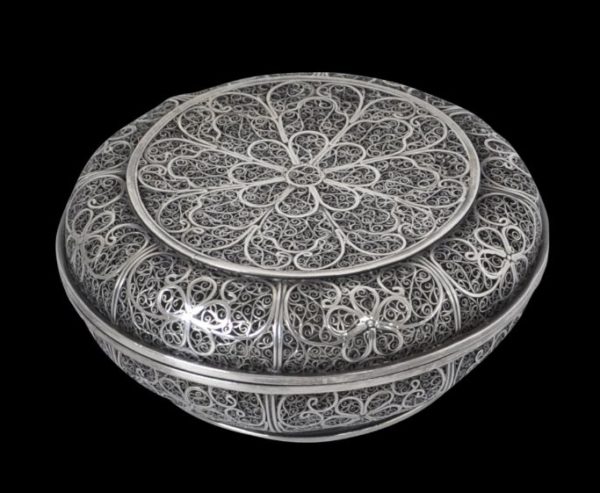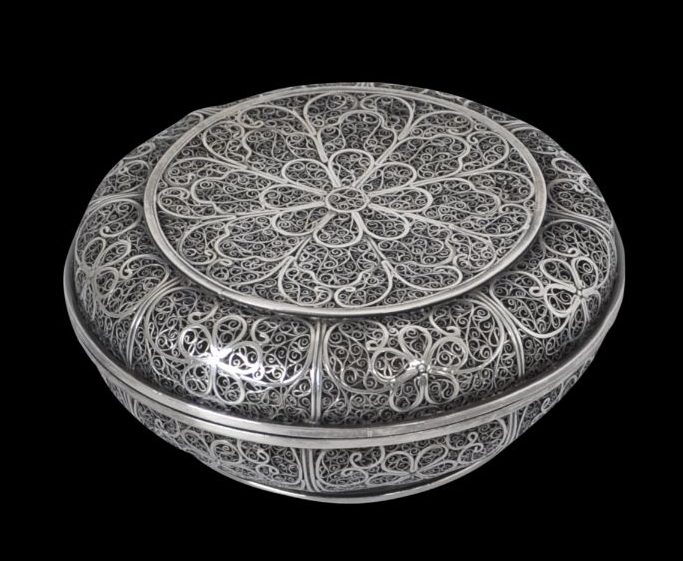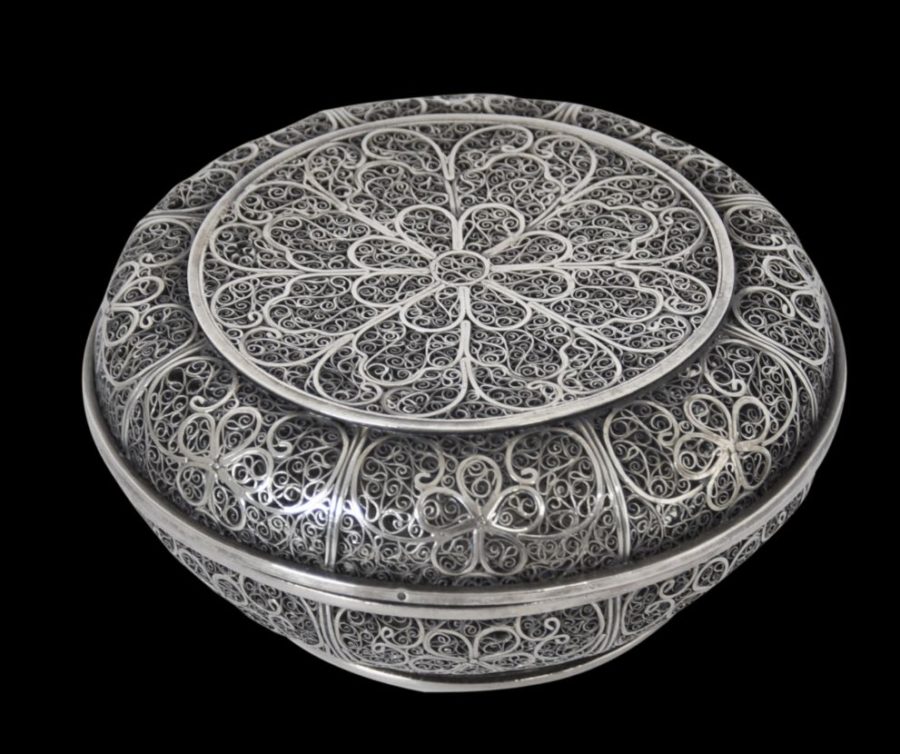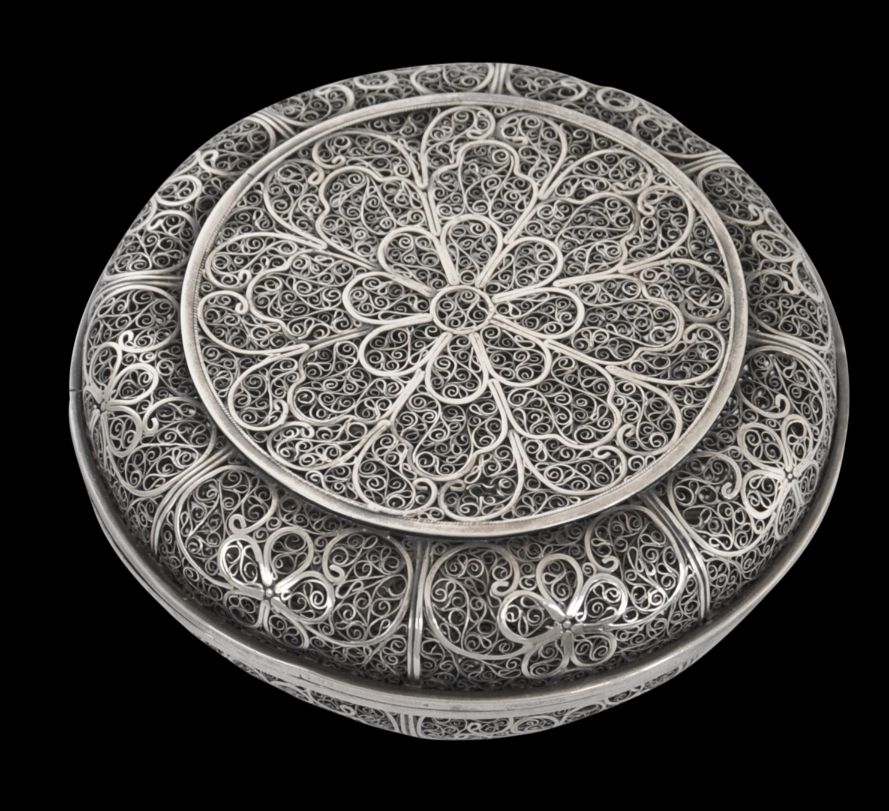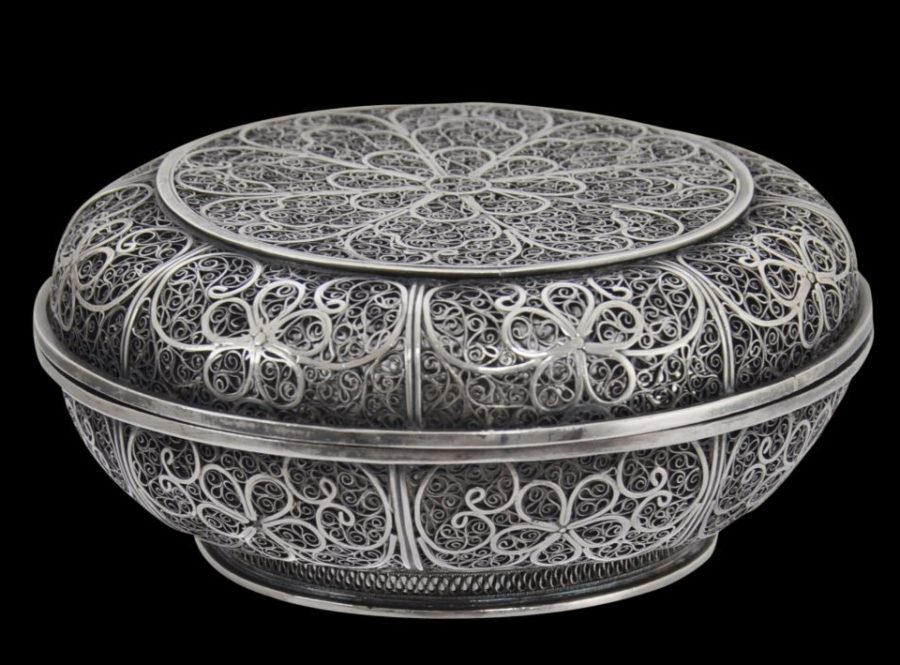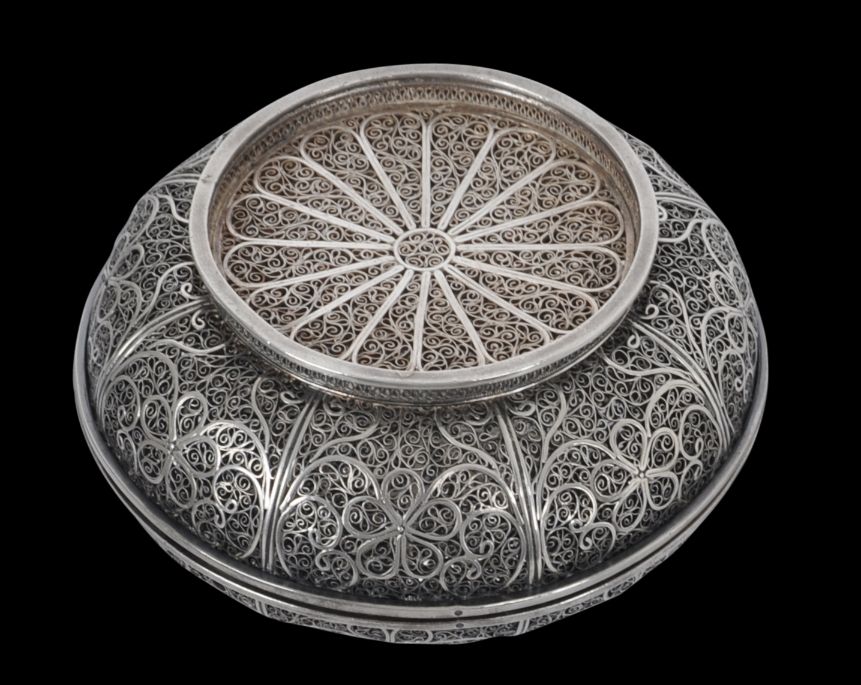This very fine, flattened, spherical box with cover is comprised entirely of silver filigree work. It was almost certainly made in the Dutch East Indies, either in Batavia or the west coast of Sumatra, most probably at the behest of the Dutch East India Company (VOC). The VOC utilised the work of various silversmithing communities locally, including the local Chinese, local Indians, the Balinese, and almost certainly the Malays and Minangkabau of Sumatra (Brinkgreve & Leijfeldt, 2017). Some researchers believe that this type of filigree was produced in India. This might also be the case and certainly examples of this type have been found in India but we believe that is because the VOC exported such filigree to India for the local Islamic market.
Such silver filigree was produced by indigenous and local ethnic Chinese artisans for the VOC which exported it to Europe but also to markets within Asia most particularly to India and probably to Ottoman Turkey. The quantity of such filigree work found in India by the time the British arrived led them to assume that it was all produced in India, when in fact, it is more likely that certain types of filigree found locally were luxury trade goods imported from elsewhere in Asia.
The box here comprises a cover with a central round panel filled with white might be termed a ‘scrolling lotus’ flower motifs. The sides comprise eight panels with similar motifs. The fine craftsmanship extends to the base – it too is made up of fine filigree work rather than being a simple plate of sheet silver. The base is similarly made.
It sits on a low ring foot of zig-zag filigree.
The filigree features a mixture of flatter, thicker wires that form the outline of the designs, with the remaining spaces being filled with finer, twisted and curled silver wires.
This combination of wide, flattened wire components with fine twisted filigree work is found on articles often ascribed (possibly incorrectly) to Goa of the second half of the seventeenth century – see Menshikova (2006, p. 43) for two examples, and Levenson (2007, p. 263-4) for others. Menshikova refers to filigree items of this type as having been made by ‘Chinese masters in India or Southeast Asia’ in the seventeenth century.
The box here is in excellent condition. Only one tiny strands of filigree seems to be missing or out of place – on one side and barely noticeable. Overall, the box is a splendid patina, colour and obvious age.
References
Bennett, J., & R. Kelty, Treasure Ships: Art in the Age of Spices, Art Gallery of South Australia, 2014.
Brinkgreve, F. & J. Leijfeldt, ‘The Chinese-Indonesian collections in the National Museum of World Cultures, the Netherlands’, in Wacana, Vol. 18, no. 2, 2017.
Corrigan, K., J. van Campen, & F. Diercks (eds.), Asian in Amsterdam: The Culture of Luxury in the Golden Age, Peabody Essex Museum/Rijksmuseum, 2015.
Eliens, T.M., Silver from Batavia/Zilver uit Batavia, Gemeentemuseum Den Haag/W Books, 2012.
Jordan, A. et al, The Heritage of Rauluchantim, Museu de Sao Roque, 1996.
Marsden, P., The Wreck of the Amsterdam, Hutchinson, 2nd ed., 1985.
Marsden, W., The History of Sumatra: Containing an Account of the Government, Laws, Customs and Manners of the Native Inhabitants, with a Description of the Natural Productions, and a Relation of the Political State of that Island, 1784.
Parthesius, R., Dutch Ships in Tropical Waters: The Development of the Dutch East India Company (VOC) Shipping Network in Asia 1595-1660, Amsterdam University Press, 2010.
Piotrovsky, M. et al, Silver: Wonders from the East – Filigree of the Tsars, Lund Humphries/Hermitage Amsterdam, 2006.
Veenendaal, J., Asian Art and the Dutch Taste, Waanders Uitgevers Zwolle, 2014.
Voskuil-Groenewegen, S.M. et al, Zilver uit de tijd van de Verenigde Oostindische Compagnie, Waanders Uitgevers, 1998.


